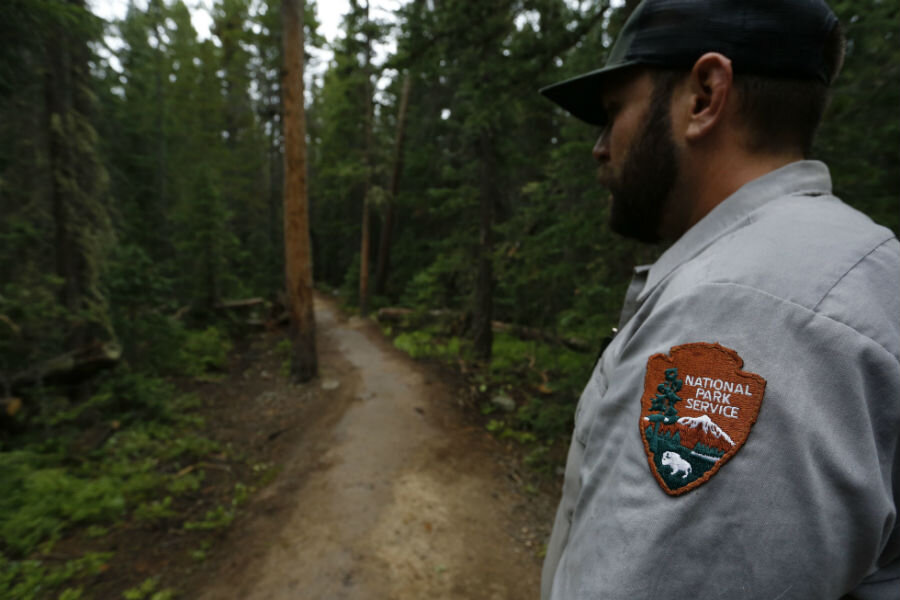The National Parks Service, at 100, works to be more inclusive
Perhaps no single government agency is so expressive of the US strain of idealism as the National Parks Service. Tasked with preserving and curating the nation’s great outdoors, the agency stewards not just physical spaces, but symbols of the country’s identity.
But as the NPS turns 100 on Thursday, it sees a national public in the midst of a profound demographic change. The service is trying to draw in a public that better reflects that change.
"If public lands aren't telling their story, and they don't see themselves reflected in these beautiful places, they may not support them," Interior Secretary Sally Jewell told the Associated Press. "They may not recognize that these are their assets and protect them for future generations."
The NPS has been slow to the uptake – alarmingly so, for some. The last survey conducted by the service, in 2011, showed that only 22 percent of visitors were minorities, compared to 37 percent of the population as a whole. The agency’s workforce is also disproportionately white, at 83 percent of its employees.
David Vela, superintendent of Grand Teton National Park, is particularly troubled by the lack of diversity in the park attendees. He shared his concerns with Todd Wilkinson for a cover story on the National Parks published in The Christian Science Monitor last month:
The superintendent of Grand Teton National Park, who is of Hispanic descent, says he seldom sees “people like me” reflected in the multitude of tourist faces. Even though Jackson Hole, Wyo., the gateway community to Teton, is more than 25 percent Latino, just 2 percent of local Hispanics actively use the park.
A 26-year veteran of the Park Service, Mr. Vela is the son of working-class parents who grew up in a small southeast Texas farming community. 'The concept of national parks was foreign to us. And if we encountered Park Service rangers in uniform we didn’t know what entity they represented,' he says.
Although his parents had never been to a national park, they felt compelled to embark on a trip to Yellowstone and Grand Teton because many other local families were making the pilgrimage. 'When we arrived in Grand Teton, I didn’t understand why it was protected and when I discovered the reason, that it was done on behalf of all people, for current and future generations, it was a powerful message,' he says. 'Just one visit to a national park was life changing.'
Last month, Glenn Nelson, the founder of a website that encourages diversity in the outdoors, published an op-ed in The New York Times calling for the agency to launch an “all-out effort” to diversify its ranks and boost outreach to potential minority visitors.
“We need to demolish the notion that the national parks and the rest of nature are an exclusive club where minorities are unwelcome,” he wrote.
The NPS is starting to move in that direction: recruiting minority interns, conducting outreach in schools with large minority populations to encourage children to visit parks, and producing videos and brochures for Spanish-speaking audiences.
Myron F. Floyd, who specializes in race and ethnicity in outdoor recreation at North Carolina State University, told the AP that minorities tend not to grow up making trips to national parks and monuments. For African-Americans, a history of exclusion from those parks is a factor. For other groups, linguistic barriers can be a factor, too.
Another factor may be a longstanding lack of monuments highlighting the contributions of minorities. President Obama has made a point of breaking with that, designating as national monuments sites of historical resonance for women, workers, racial minorities, and the LGBT community – including, most recently, the site of the Stonewall uprising in New York City, which the president called “the first national monument to tell the story of the struggle for LGBT rights.”
“I believe our national parks should reflect the full story of our country – the richness and diversity and uniquely American spirit that has always defined us,” he said then.
This article contains material from the Associated Press.







